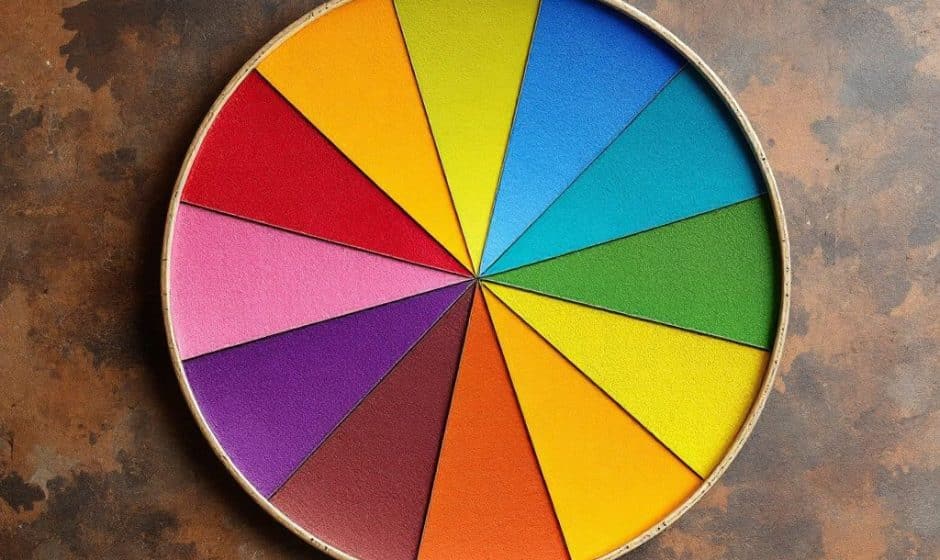Hey there! Ever felt like you’re just off? Like something’s unbalanced and you can’t quite put your finger on it? Yeah, I’ve been there too. Maybe you’ve heard about color therapy, or chromotherapy, and you’re a bit curious. So let’s dive into this together! Who knows, it might just be the answer you’re looking for.
Color work isn’t just about pretty hues or what you’d wear on a sunlit afternoon. It’s an actual thing! Colors can play a significant role in our physical and emotional well-being. This connection could even extend to aspects like hormone regulation, believe it or not. If you’re scratching your head wondering how a simple color can influence something as complex as hormone regulation, stick with me. It’s going to be an enlightening journey.
How Does Color Therapy Work?
Before we dive into how colors influence hormone regulation and bring balance, let’s chat about how color therapy works. It might seem a little out there at first. But give it a chance.
In simplest terms, color therapy is the use of colors to improve mood, energy levels, and overall health. Each color has a different frequency and energy, which can positively or negatively affect us.
Catching the Vibes: Color Vibrations
Think of colors as friends with their vibes. Red is like that friend who bursts into the room with boundless energy, while blue sort of slips in quietly, soothing everything in its calm presence. Colors vibrate at specific frequencies and when they interact with our body’s energy fields or chakras, they can impact our emotions and even our physical state.
For example, ever notice how being in a blue room might calm you down? Or how yellow just seems to lift the mood? That’s color therapy at play!
Colors and Hormone Regulation
Since the crux of our chat revolves around hormone regulation, let’s not waste any time. Hormones are these fascinating little messengers moving around in our body. They basically tell everything what to do and keep everything balanced. When they’re out of whack, it can feel like everything is going haywire.

Using specific colors, we can bring some balance to hormone regulation. For instance, different colors might stimulate or soothe our production of serotonin, melatonin, and other crucial hormones. Fascinating, right?
Delving into the Colors: What Each One Can Do for You
Enough theory for now. Let’s take a stroll through the color palette. I’ll introduce you to each shade and chat about how it might influence your mood, energy, and yes, even those pesky hormones.
1. The Energy of Red
Red pulses with vitality. It’s bold, it’s fascinating, it’s… kind of like your morning espresso. Hot and invigorating. Red can stimulate our bodies and increase our motivation and physical instincts. However, too much of it might leave you feeling aggressive or anxious.
For hormone work: Consider using red when you need a lift, or if you’re feeling sluggish. Maybe you need a zing to kickstart some hormonal activity.
2. The Soothe of Blue
Opposite of red, we have the ever-calm blue. Its gentle, cooling essence can help lower stress and subtly bring peace to your bustling brain. Blue is the perfect ally during bedtime as it can promote the release of melatonin, easing you into restful sleep.
Need hormone help here? If your cortisol levels (our stress hormone) are soaring, integrating blue can help mellow things down.
3. The Joy of Yellow
Ah, yellow. It’s sunshine in color form. It brings happiness, fun, and optimism. Feeling the darker days hanging heavy on your shoulders? Yellow might just light the way.
Hormones? Yellow can help with serotonin production, giving you a happy boost when you’re in those murky, murky depths.
4. The Balance of Green

There’s a reason our eyes love green so much. Besides being all natural and earthy, green signifies balance and renewal. It’s like a reset for our bodies and souls.
Green’s impact on hormone regulation lies in its ability to stabilize emotions. If your world feels off-kilter because of hormonal issues, try surrounding yourself with green.
5. The Creativity of Orange
Vibrant and adventurous, orange merges the energizing quality of red with the joy of yellow. It stimulates creativity and enthusiasm. Want to stir those creative juices or simply enjoy life more? Get some orange into your day.
Serotonin might get a bump too, helping with mood swings.
Putting Color Therapy to Work for You
Now comes the fun part: How exactly do you put all this colorful intel into action? Here are some tried-and-true ways to incorporate color therapy into your daily routine:
Interior Decorating
Start small. Maybe you’re not ready to paint all your walls with a vivid palette but consider accents like pillows, curtains, or artwork. Just a splash here and there.
Clothing Choices
What you wear affects your mood and energy! Consider it color therapy on-the-go. Feeling down? Toss on something yellow and see how the day feels!
Light Bathing

Using colored lamps or light filters can transform a room. This gentle switch engages our perception of color without overwhelming the senses. I’ve heard folks raving about a good light bath session for a productive afternoon.
Visualization
Even just visualizing colors can help. Sounds funky, I know, but trust me on this one. Close your eyes and envision yourself surrounded by the color you need at that moment. Let the ambiance shift your energies and influence hormone regulation. It costs you nothing but a bit of imagination.
Circling Back: What’s the End Goal Here?
The main objective, friends, is balance. Whether it involves adjusting hormone levels or simply ensuring you’re in a good place emotionally and physically, color can be your silent partner. It shines and pops up to guide you when things seem drab and out of whack.
Recap: Key Takeaways for Your Color Healing Journey
We covered a lot in this stroll down the chromatic path, so let’s recap those quick highlights:
- Red for energy & motivation.
- Blue to cool, calm & prepare for rest.
- Yellow for happiness & mood uplift.
- Green to achieve stabilization and balance.
- Orange for creativity & zest.
What to Avoid
A quick note: Overexposure to any single color might alter its intended benefits. Imagine feasting solely on double-fudge chocolate for a month straight… tasty at first but then cumbersome. Same goes for colors. Balance is key here too.
Craft Your Color Plan
Now that you’re armed with all this brightness, how about designing a little plan for your own color therapy journey? Whether at work, home, or the spaces in between, incorporating a bit of chromatic magic is simpler than you’d think. Keep it light or deep—it’s all about finding your own flow.
Thank you for letting me guide you through this colorful odyssey! Let’s carry these vibrant insights with us, embracing the harmonies every shade holds. Go ahead, give these colors a try and let me know how they make you feel! 🌈
Frequently Asked Questions
What is hormone regulation, and how does it relate to hormone replacement therapy (HRT)?
Hormone regulation involves the balance and functioning of hormones in the body. Hormone replacement therapy (HRT) is a treatment that tops up or replaces missing hormones, particularly during perimenopause and menopause when levels of oestradiol, progesterone, and sometimes testosterone decline. HRT helps improve symptoms and future health by stabilizing hormone levels[1][3].
What are the common symptoms of hormonal imbalance that HRT can address?
Common symptoms of hormonal imbalance include irritability and fatigue, mood swings and depression, skin dryness and loss of elasticity, water retention and weight gain, osteoporosis and joint pain, less interest in sex, insomnia, and memory issues. HRT can help alleviate these symptoms by restoring stable hormone levels, leading to better sleep, increased energy, enhanced memory, and improved overall well-being[3][5].
What are the different types of hormone replacement therapy available?
Hormone replacement therapy comes in various forms, including systemic hormone therapy (pills, patches, rings, gels, creams, or sprays), low-dose vaginal products (creams, tablets, or rings), and bio-identical hormone replacement therapy. Bio-identical hormones are structurally identical to human hormones and may have fewer side effects than traditional HRT. The choice of HRT type depends on individual health needs and preferences[1][3].
What are the common side effects of hormone replacement therapy?
Common side effects of HRT include bleeding, breast tenderness, bloating, and mood changes (often referred to as the “four Bs”). These side effects are usually well-tolerated and often settle over time. If side effects persist, adjustments to the dose or type of HRT may be necessary[1].
References




